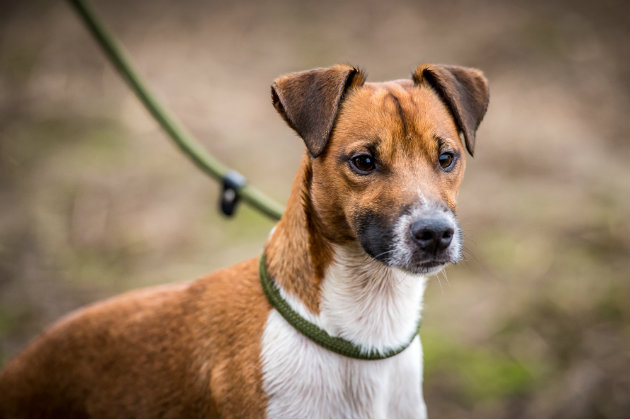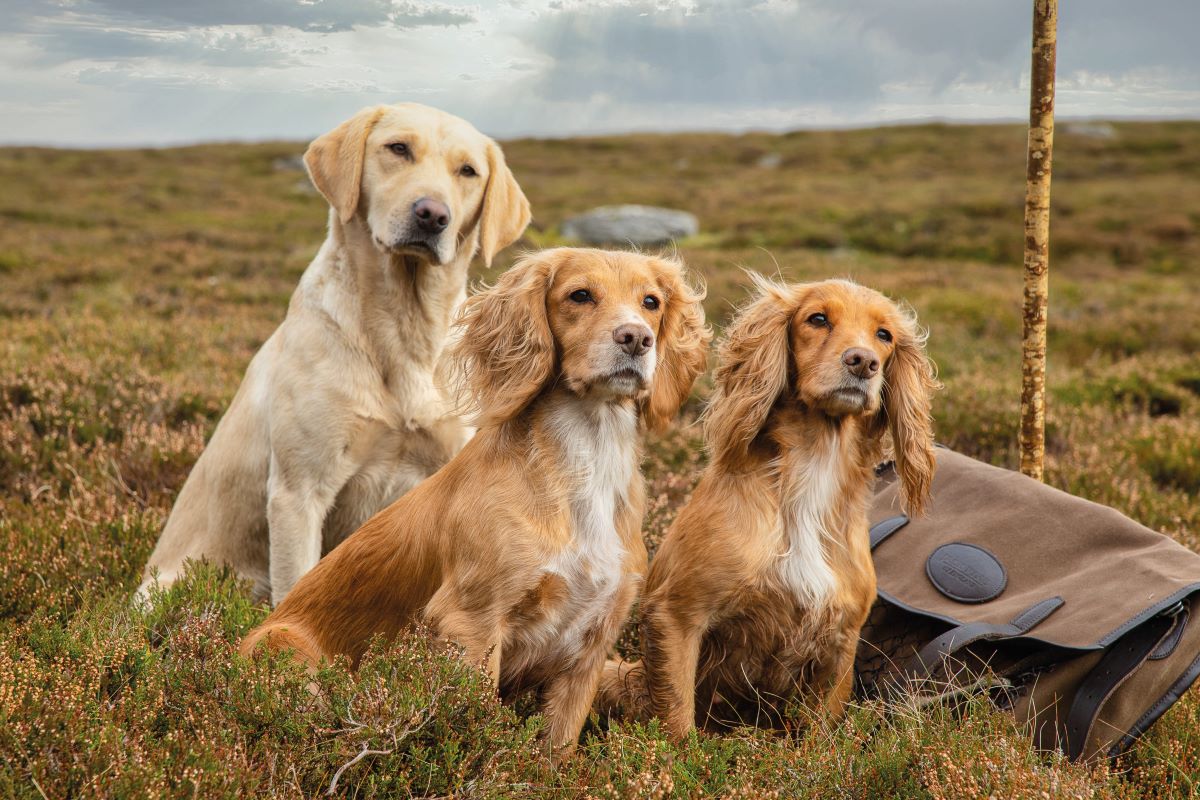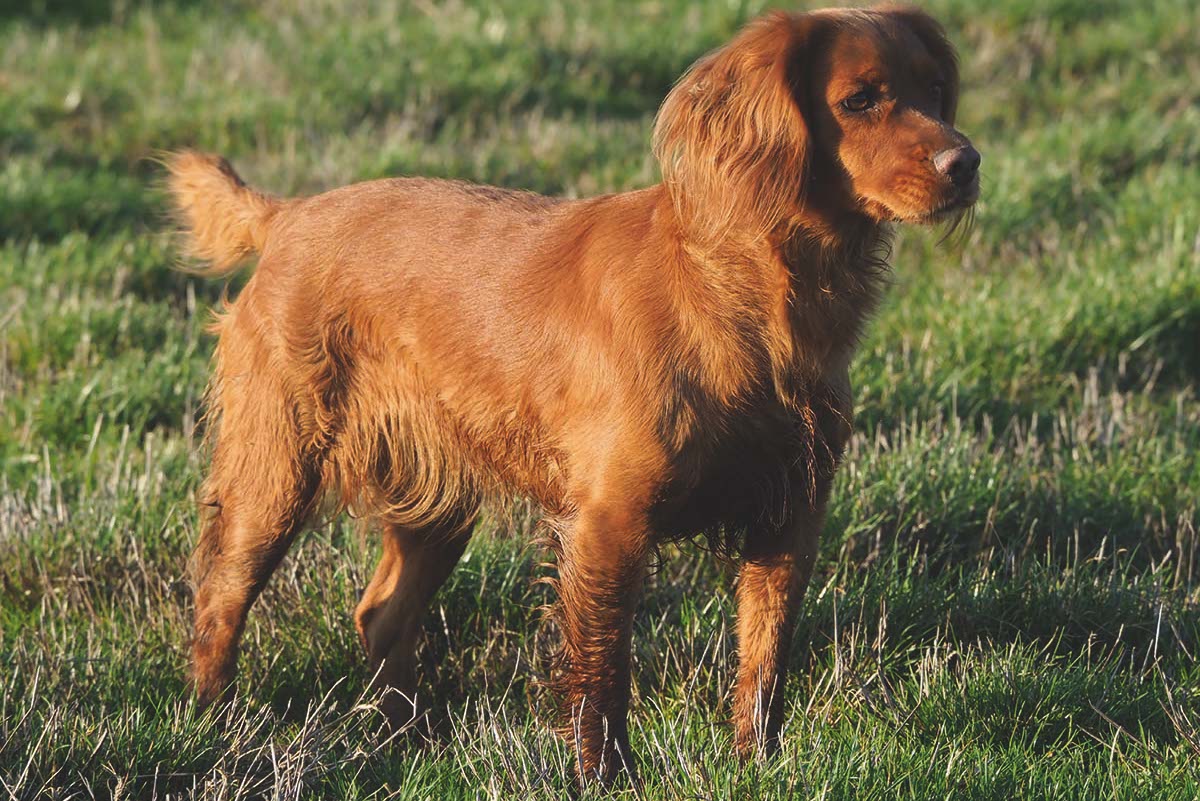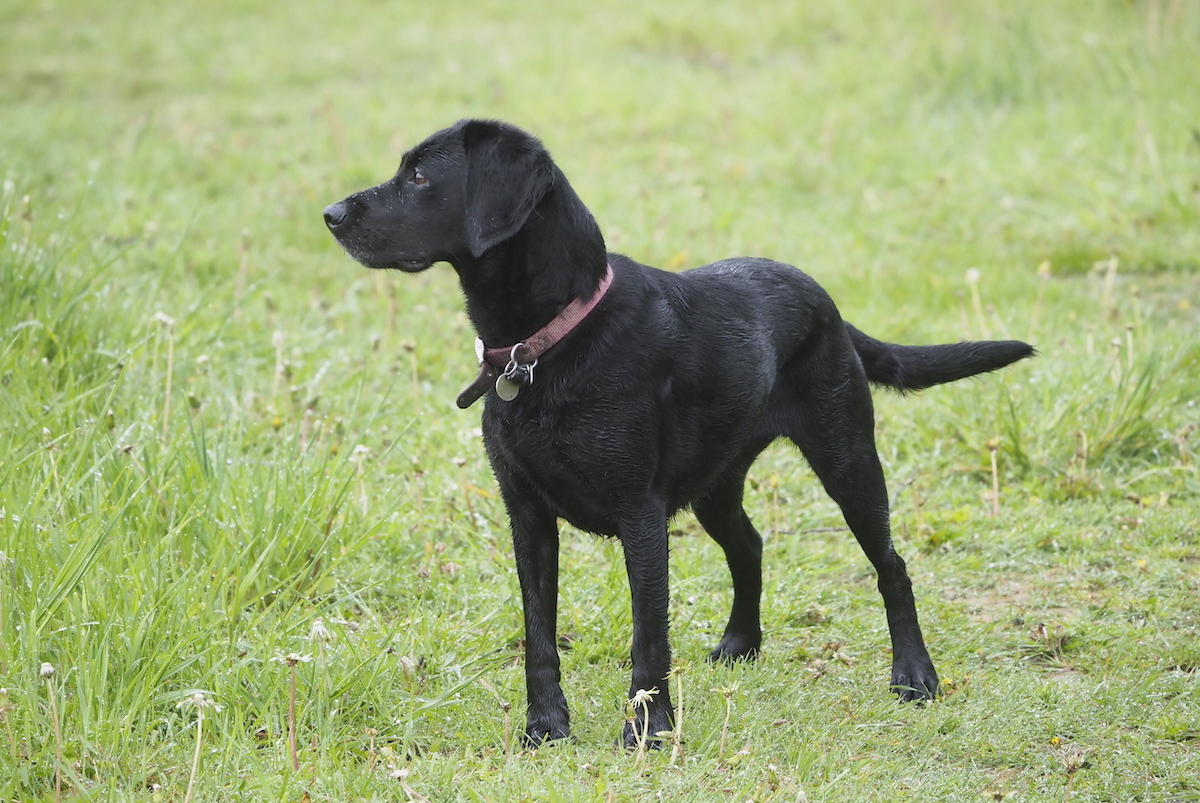A useful day out with some Plummer terriers
Plummer terriers are adept at flushing game and vermin to the gun, as John Glover discovers during a day out on a farm to test the dogs' versatility

Plummer terrier Billy has an intelligent and alert outlook

Red Meg is put through her paces by Mike Newitt
By their very name, terriers are dogs of the earth. In the past, before certain legislation was implemented, this varied and extremely valiant family of dogs did exactly that, going to ground in pursuit of their prey. Everything from badgers to otters was pursued by the smooth, the rough, the white, the coloured, the English, the Scottish, the Welsh and the Irish that collectively we namein one courageous group: the terriers.
Nowadays, the only earthwork a terrier can legally carry out is on foxes — and even then such an activity must meet certain criteria as defined by the Hunting Act 2004. However, above ground one is still at liberty to flush game and pests to the gun using up to two terriers. It was this very thing that I set out to do with working Plummer terries aficionado Mike Newitt and his two dogs, Billy, a pure Plummer, and Ruby, an outcrossed Plummer/bull/Fell terrier mix.
Mike has kept Plummer terriers for several years, after working other breeds, and is lucky enough to work them on an almost daily basis. He ranks the breed highly in terms of prey drive and nose and also finds them extremely loyal.

Terriers Billy and Ruby get down to business
With me was Caroline Englefield and our own Red Meg, a highly energetic working Irish terrier, another breed well known both in the UK and on continental Europe for its prowess in driving game and vermin to the Guns. We met up at Temple Farm in Wolvey, a farm and commercial coarse fishery on the Warwickshire-Leicestershire border. Our mission was a perfect opportunity to test the advantages of using terriers to flush and drive.
Our quarry was varied — rabbit, fox and pheasant — but duck, hares and partridges are occasionally flushed to the shotguns. The terriers sometimes come across brown rats, especially around lakes, which are usually afforded the quick coup de grâce of “shake and drop” so typical of most of the terrier tribe, an advantage in using a type of dog that is renowned for its bold, plucky disposition.
The terrier tribe
We used a Plummer and an Irish terrier on our day but other breeds and types excel in this discipline, including the tried and tested Jack Russell, Border, Bedlingtons and Brian Plummer’s other terrier, the Sporting Lucas. Sealyhams, German jagdterriers, Ceskys, wire-haired and smooth-haired fox terriers are frequently worked to both the shotgun and rifle on the Continent.
Billy, Ruby and Meg – the Plummer terriers
It was a lovely crisp, cold January morning that gave way to a bitter, somewhat grey and overcast day, which only saw glimpses of the sun towards dusk. We were using Billy, an extremely enthusiastic two- year-old pure Plummer from the Bayers kennel, and Ruby, the outcross bitch under a year old. Ruby was bred in Ireland and is part of an outcrossing programme to correct some faults created by inbreeding, something the breed’s creator Brian Plummer was keen to see rectified before his death in 2002. Our dog, Red Meg, is a talented and fast terrier bred in Lancashire by Tim Allen. I have used Meg, who is nearly four, ferreting, lamping and trailing shot game and ratting.
Our initial plan was to push the dogs through some marsh-like terrain on which grows a coarse expansion of grasses and rush. Despite the dogs’ best efforts, nothing was flushed except a wily cock pheasant, which did a crafty runner instead of flying. The terriers were quickly on his tail and we were soon pushing through some high-standing Norfolk reed, but the bird did an effective disappearing act and we drew a blank.
“All the dogs worked their hearts out and reinforced the saying that ‘a terrier is only as good as its nose’”
We were now at a 45° angle of the field and it was here that we crossed into an adjacent field bordered by a hedgerow, which gave way to the upper reaches of the river Anker that marks the boundary.
By now Billy and Meg were slightly too far ahead of Mike and his trusty AYA Yeoman. It was at this point the first fox bolted. Charlie was followed by a second fox bolting across the field but again far too far away for the 12-bore’s range.
Alternating the terriers around on leads and working them only two at a time gave all the dogs a chance to work, facing any cover without hesitation. By a bend in the Anker, Meg found and flushed three pheasants — two of them swung to Mike’s left and, with branches in the way, made for a difficult shot. The third made the situation equally difficult by going up high and away to Mike’s right but, alas, again through the branches. Neither of the shots connected but the terriers were working the cover hard.
That set the tone for the remainder of the afternoon, with several more birds being flushed out of range. The same scenario applied to a solitary rabbit that made good its escape but was marked firmly to ground by Ruby. All the dogs worked their hearts out and reinforced the saying that “a terrier is only as good as its nose”. Despite an empty bag, a good time had been had by all.
Plummer terriers – a history
The breed’s creator was Brian Plummer who, having been raised in south Wales, was an enthusiastic hunter of rats. He wanted to breed the perfect ratting terrier and for it to be named after him. It seems that he got his wish because even after Brian’s death, the Plummer has a massive, almost cult following.
Brian moved to the Midlands then Scotland but it was during his years teaching in the Black Country that he set about breeding his ideal working terrier by blending several breeds, including Jack Russells, Fell terriers, beagles and bull terriers. To fix the type, lots of inbreeding took place and various colours became unacceptable, which in turn led to certain dogs that were otherwise sound being discontinued from the breeding programmes — a long-term disadvantage in some cases.
Prior to his death, Brian advocated an outcross programme to rectify what he saw as undesirable traits, such as poor heads, and to widen a rapidly diminishing gene pool.
Eventually, an outcrossing project was set up by people of the same opinion as Brian and Mike Newitt’s Ruby is just one of the promising dogs produced that will be bred back to a pure Plummer. Ruby is 1/16 bull-Fell outcross and the next cross back to a Plummer will produce a dog with correct colouration and a much expanded, healthier gene pool.
Plummers are not only ratting dogs but efficient terriers to ground when certain criteria are met in accordance with the Hunting Act 2004.
A closer look at the terrier
There is no doubt that the terrier breeds are the “hard men” of the canine world, ready to take on their quarry above…
Terrier breeds: are they born anarchists?
Most, if not all of the terrier breeds bring a smile to our faces, whether the smug condescension of the…
Terrier Types
There are many different terrier types. There’s the ever-popular Jack Russell and then there’s the little seen Sealyham terrier. What’s…











